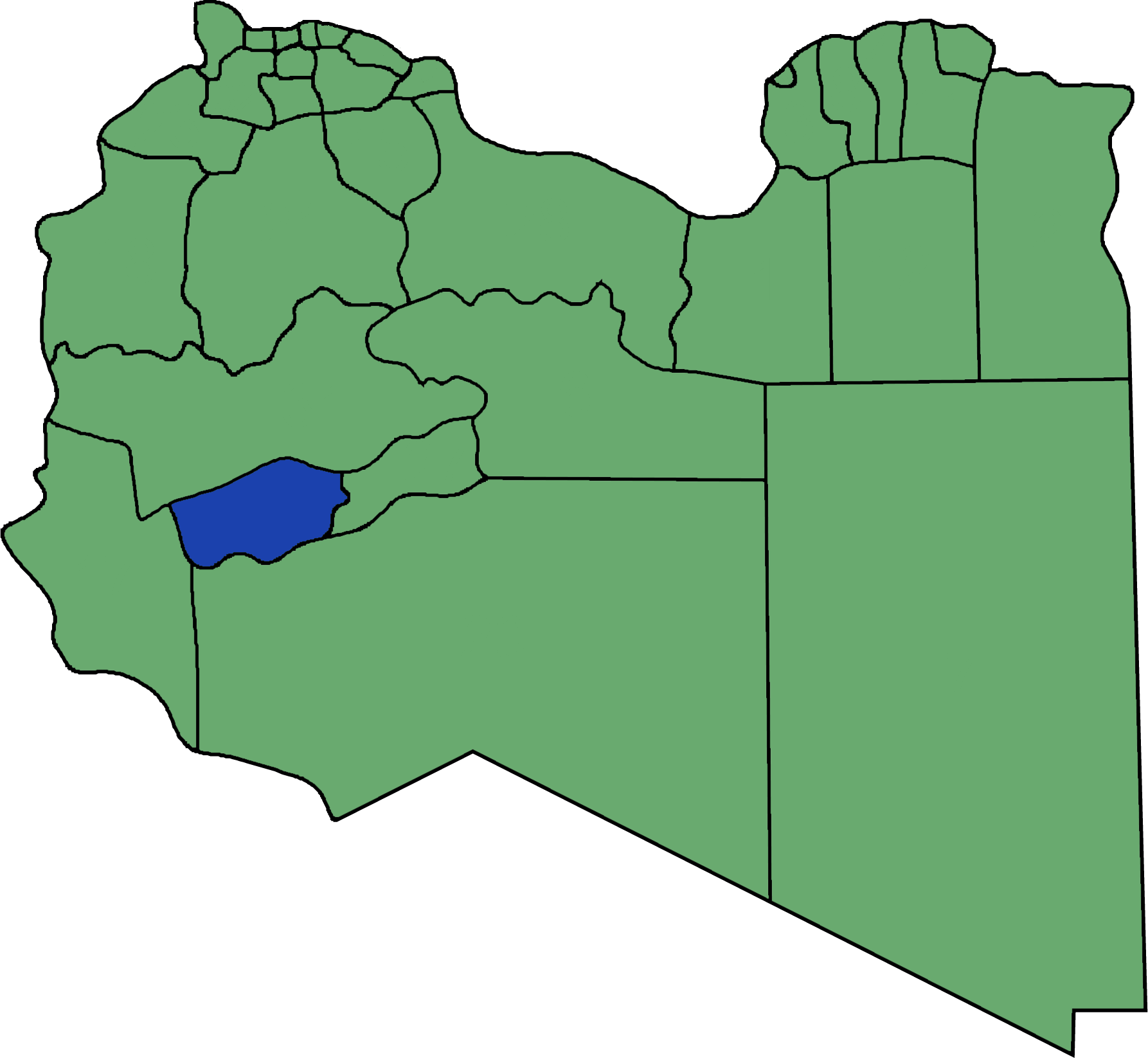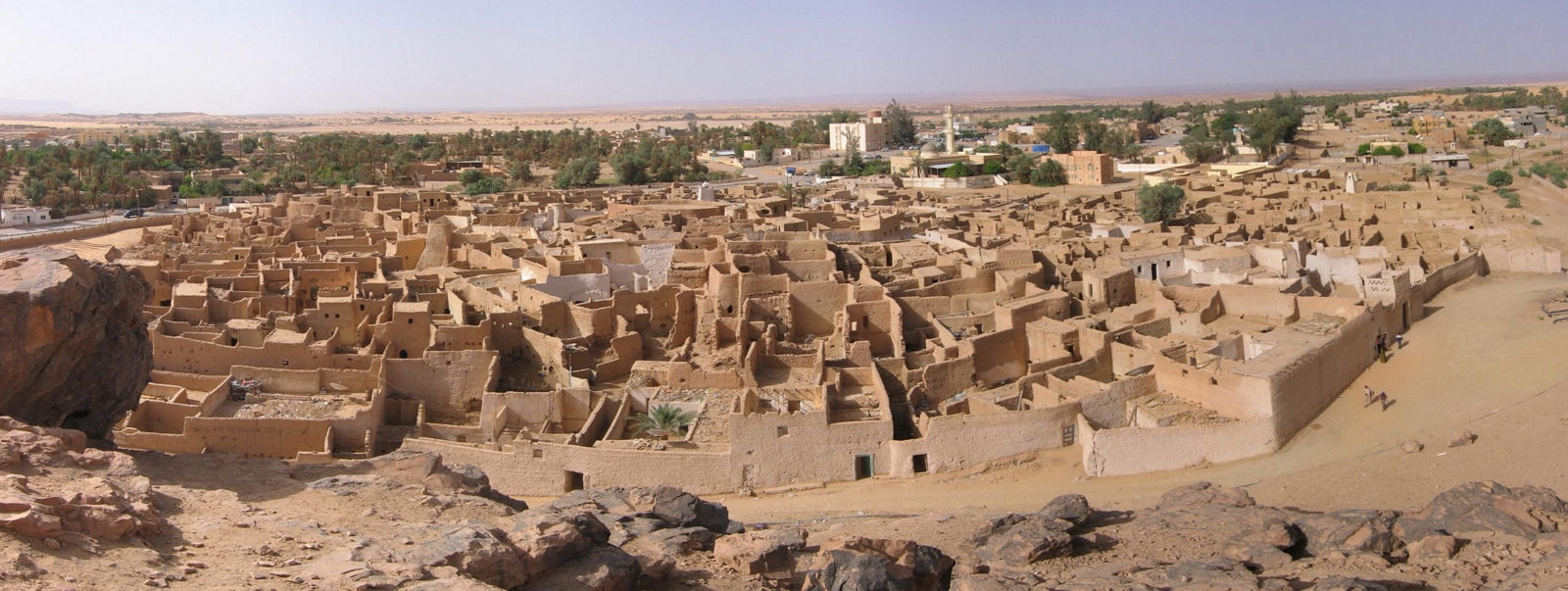|
Wadi Al Hayaa District
Wadi al Hayaa ( ''Wādī al Ḥayāh'') is one of the Districts of Libya, districts of Libya. Its capital is the city of Ubari. As of 2006, it had a population of 72,587, area of and a population density of 2.28 persons per square kilometer. Geography The district is bordered by Wadi al Shatii District, Wadi al Shatii in the north, Sabha District, Sabha in the east, Murzuq District, Murzuq in the south and Ghat District, Ghat in the west. The district is part of the Fezzen geographical division of Libya which is mostly desert. The region receives an annual rainfall of . There are no perennial rivers in the region, but the region is abundant with groundwater aquifers. Libya has mostly a flat undulating plain and occasional plateau, with an average elevation of around . Around 91 per cent of the land ? is covered by desert, with only 8.8 per cent agricultural land (with only 1% arable lands) and 0.1 per cent of forests. The major resource found in the area is manganese. The Fezzen ... [...More Info...] [...Related Items...] OR: [Wikipedia] [Google] [Baidu] |
Districts Of Libya
In Libya there are currently 106 districts, second level administrative subdivisions known in Arabic as Baladiyat of Libya, ''baladiyat'' (singular ''baladiyah''). The number has varied since 2013 between 99 and 108. The first level administrative divisions in Libya are currently the governorates (''muhafazat''), which have yet to be formally delineated, but which were originally tripartite as: Tripolitania in the northwest, Cyrenaica in the east, and Fezzan in the southwest; and later divided into Governorates of Libya, ten governorates. Prior to 2013 there were twenty-two first level administrative subdivisions known by the term ''shabiyah'' (Arabic language, Arabic singular ''šaʿbiyya'', plural ''šaʿbiyyāt'') which constituted the districts of Libya. In the 1990s the shabiyat had replaced an older baladiyat system. Historically the area of Libya was considered three provinces (or states), Tripolitania in the northwest, Cyrenaica in the east, and Fezzan in the southwe ... [...More Info...] [...Related Items...] OR: [Wikipedia] [Google] [Baidu] |
Libya
Libya, officially the State of Libya, is a country in the Maghreb region of North Africa. It borders the Mediterranean Sea to the north, Egypt to Egypt–Libya border, the east, Sudan to Libya–Sudan border, the southeast, Chad to Chad–Libya border, the south, Niger to Libya–Niger border, the southwest, Algeria to Algeria–Libya border, the west, and Tunisia to Libya–Tunisia border, the northwest. With an area of almost , it is the 4th-largest country in Africa and the Arab world, and the List of countries and outlying territories by total area, 16th-largest in the world. Libya claims 32,000 square kilometres of southeastern Algeria, south of the Libyan town of Ghat, Libya, Ghat. The largest city and capital is Tripoli, Libya, Tripoli, which is located in northwestern Libya and contains over a million of Libya's seven million people. Libya has been inhabited by Berber people, Berbers since the late Bronze Age as descendants from Iberomaurusian and Capsian cultures. I ... [...More Info...] [...Related Items...] OR: [Wikipedia] [Google] [Baidu] |
Ubari
Ubari or Awbari () is an oasis town and the capital of the Wadi al Hayaa District, in the Fezzan region of southwestern Libya. It is in the Idehan Ubari, a Libyan section of the Sahara Desert. It was the capital of the former ''baladiyah'' (district) called Awbari, in the southwest of the country. Geography Ubari is in the Targa valley, lying between the Messak Sattafat plateau and Idhan Ubari erg sand dunes and lakes. Native plants include wetland grasses at the natural spring-fed lakes' shorelines, and the native Saharan date palm (''Phoenix dactylifera''). Ubari is located in one of the sunniest and driest areas in the world. It has a hot desert climate (Köppen climate classification ''BWh'') with short, very warm winters but long, extremely hot summers. Average annual rainfall is one of the lowest on the planet with only 8 mm (0.31 in) and many decades may easily pass without any rainfall at all. Ubari has permanent, unlimited sunshine and clear skies all year ... [...More Info...] [...Related Items...] OR: [Wikipedia] [Google] [Baidu] |
Vehicle Registration Plates Of Libya
Libya requires its residents to register their motor vehicles and display vehicle registration plates. Current plates are Vehicle registration plates of Europe#Format, European standard 520 mm × 110 mm. Current Series Libya's current series of license plates entered circulation in 2013, after First Libyan Civil War, Libyan Revolution and the overthrow of Gaddafi. Numbers on license plates are in Latin Alphabet, and all plates carry the Arabic text ليبيا meaning ''Libya'', in Naskh (script), Naskh Script, either on the right hand side or the right top corner. Private Vehicles Private vehicle license plates are black on white and follow the format [# - 1 to 999999]. The First number (#), a 1 or 2 digit number consists of a code corresponding to Baladiyat of Libya, Municipality in Libya. This number is separated by a dash from the registration code, which can be 1 to 6 digits. In the city of Tripoli, Libya, Tripoli, due to its larger population, 7-digit registratio ... [...More Info...] [...Related Items...] OR: [Wikipedia] [Google] [Baidu] |
Wadi Al Shatii District
Wadi al Shati ( ), sometimes referred to as ''Ashati'' (), is one of the central-west districts of Libya. The area is mostly desert. Wadi al Shati District is named after the depression (former lakebed) of the same name, Wadi Alshati. To the west, Wadi al Shati borders the Illizi Province of Algeria. After the 2007 administrative reorganization of districts, it borders on Nalut in northwest, Jabal al Gharbi in the north, Jufra in the east, Sabha in the southeast, Wadi al Hayaa in the south and Ghat in the southwest. Geography The depression extends east from the town of Ashkeda to the town of Ideary on the west, a distance of about 140 kilometers. To the west, Wadi al Shati borders the Illizi Province of Algeria. After the 2007 administrative reorganization of districts, it borders on the following districts: Nalut in northwest, Jabal al Gharbi in the north, Jufra in the east, Sabha in the southeast, Wadi al Hayaa in the south and Ghat in the southwest. The district i ... [...More Info...] [...Related Items...] OR: [Wikipedia] [Google] [Baidu] |
Sabha District
Sabha (Arabic: سبها Sabhā) is one of the districts of Libya, situated near the center of the country in the Fezzan region. The city of Sabha serves as its capital. The district shares borders with the following districts: Wadi Al Shatii to the north, Al Jufrah to the east, Murzuq to the south, and Wadi Al Hayaa to the west. As per the 2012 census, the total population in the region was 157,747, with an average household size of 6.9. The district had a total of 22,713 households, of which 20,907 were Libyan households. The population density of the district was 1.86 persons per square kilometer. Geography Sabha District borders the districts of Wadi Al Shatii in the north, Al Jufrah in the east, Murzuq in the south and Wadi Al Hayaa in the west. Sabha District is in the Fezzen region (Libyan Desert), a section of the Sahara Desert. The Sabha Air Base is in the district. The Gaberoun oasis, on a spring-fed lake, is a popular tourist attraction in the district. Lib ... [...More Info...] [...Related Items...] OR: [Wikipedia] [Google] [Baidu] |
Murzuq District
Murzuq ( ''Murzuq'') is a districts of Libya in the south of the country. Its capital is Murzuk. The city was occupied by the Ottoman Empire in 1578 and served as the capital of Fezzan off and on until the Ottomans ceded Libya to Italy in 1912. It was not occupied by the Italians until 1914. To the southeast, Murzuq borders the Bourkou-Ennedi-Tibesti Region of Chad, and to the southwest it borders the Agadez Department of Niger. The border crossing to Niger is at Tumu. Domestically, it borders Ghat in the west, Wadi al Hayaa in northwest, west of Sabha, Sabha in northwest, east of Wadi Al Hayaa, Jufra in north and Kufra in the east. Per the census of 2012, the total population in the region was 157,747 with 150,353 Libyans. The average size of the household in the country was 6.9, while the average household size of non-Libyans was 3.7. There were totally 22,713 households in the district, with 20,907 Libyan ones. The population density of the district was 1.86 persons pe ... [...More Info...] [...Related Items...] OR: [Wikipedia] [Google] [Baidu] |
Ghat District
Ghat (Berber language, Berber: ''Ɣat''; ) is one of the Districts of Libya, districts of Libya. Its capital is Ghat, Libya, Ghat. To the west, Ghat borders two provinces of Algeria: Djanet Province, Djanet in the far southwest, and Illizi Province. Domestically, it borders Wadi Al Shatii in the north, Wadi Al Hayaa in the northeast and Murzuq in the east. Per the census of 2012, the total population in the region was 157,747 with 150,353 Libyans. The average size of the household in the country was 6.9, while the average household size of non-Libyans was 3.7. There were a total of 22,713 households in the district, with 20,907 Libyan ones. The population density of the district was 1.86 persons per km2. Per 2006 census, there were totally 8,218 economically active people in the district. Libyan Civil War Since 2014, the district has been under the control of independent Tuareg militias of Ghat, Tuareg and Toubou Front for the Salvation of Libya, Tebu militias fighting each ot ... [...More Info...] [...Related Items...] OR: [Wikipedia] [Google] [Baidu] |
World Health Organization
The World Health Organization (WHO) is a list of specialized agencies of the United Nations, specialized agency of the United Nations which coordinates responses to international public health issues and emergencies. It is headquartered in Geneva, Switzerland, and has 6 regional offices and 150 field offices worldwide. Only sovereign states are eligible to join, and it is the largest intergovernmental health organization at the international level. The WHO's purpose is to achieve the highest possible level of health for all the world's people, defining health as "a state of complete physical, mental and social well-being and not merely the absence of disease or infirmity." The main functions of the World Health Organization include promoting the control of epidemic and endemic diseases; providing and improving the teaching and training in public health, the medical treatment of disease, and related matters; and promoting the establishment of international standards for biologic ... [...More Info...] [...Related Items...] OR: [Wikipedia] [Google] [Baidu] |



